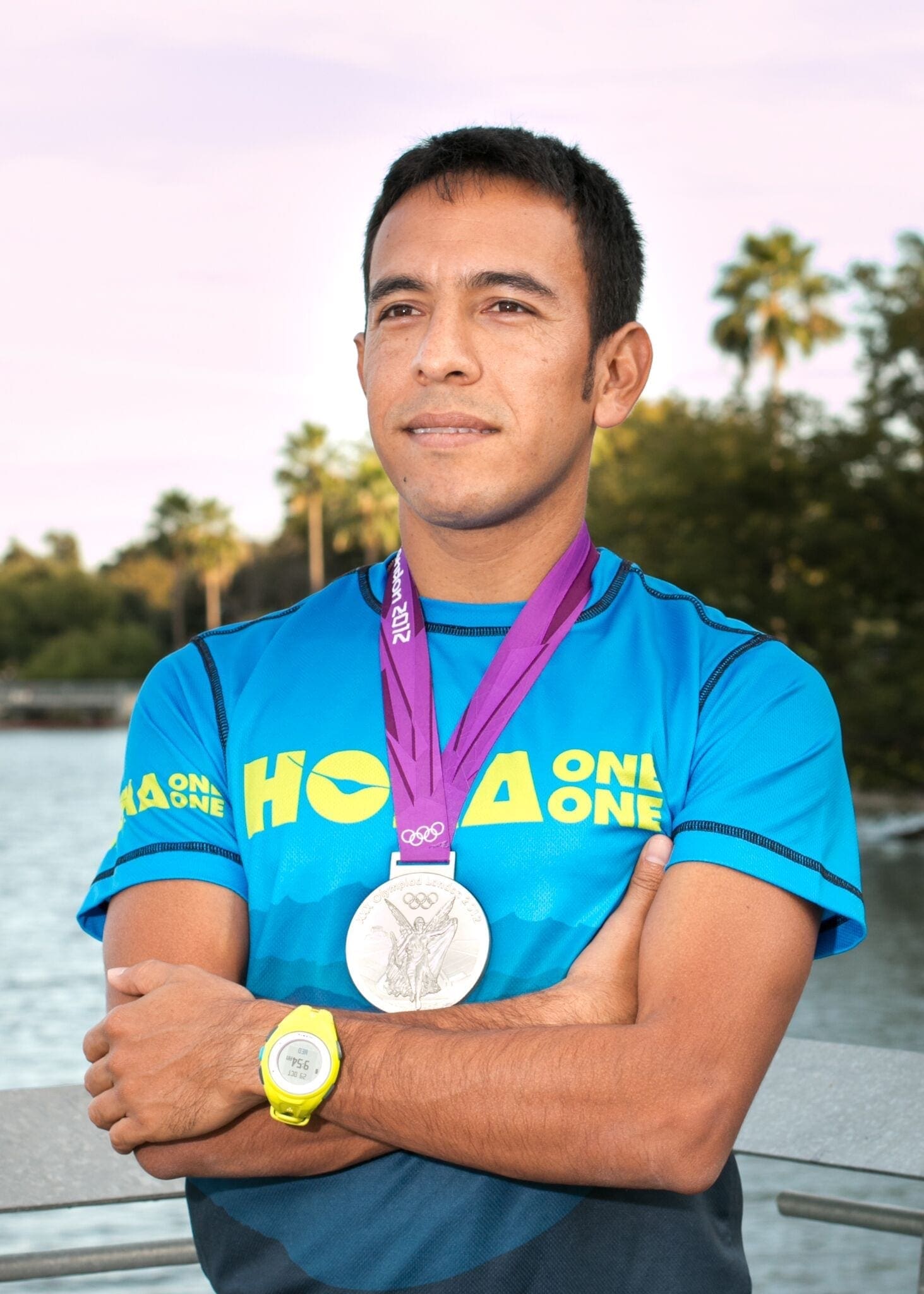Experience an Olympian’s First Sub-Four-Minute Mile
Run stride-for-stride with an Olympian as he runs his first sub-four-minute mile
Leo Manzano won the silver medal in the 1500m at the 2012 Olympics, running 3:34.79 in London. He was the first U.S. athlete to medal in the 1500m since Jim Ryun won silver at the 1968 Olympics in Mexico City. Since 2017, Manzano, two-time Olympian and Austinite, has been the race ambassador of the Austin Marathon. Even though he recently retired, he is a fixture in the Austin community and can often be found running on the trail around Town Lake. His namesake event, Manzano Mile, takes place the day before the Austin Marathon and features athletes of all abilities. Get ready to run stride for stride with Leo “The Lion” as he takes you back to his first sub-four-minute mile!

Leo Manzano, Austin Marathon Race Ambassador, poses with his Olympic silver medal.
by: Leo Manzano, Olympic silver medalist and Austin Marathon Race Ambassador
Many have compared running a sub-four-minute mile to climbing Mt. Everest. Your heart and lungs feel as if they are going to explode, all while you push your limits to see how far you can go. Before anyone ran a sub-four-minute mile it was presumed that if anyone did their heart would explode, causing instant death. In 1954, Sir Roger Banister proved that theory wrong when he ran a sub-four-minute mile in three minutes 59.4 seconds.
A mile is exactly 1.609344 kilometers, or 5,280 feet. To run an actual mile on the track, you have to back up 9.344 meters from the finish line. Many people run the 1600m and call it a mile, but this is not the true mile. The true mile is 1,609.344 meters. To run a sub-four-minute mile you have to run at an average speed of 15 miles an hour per lap, or less than 60 seconds per 400 meters.
Running a sub-four-minute mile
Running a sub-four-minute mile is easier said than done. The first lap is always easy. You get into the rhythm of the pace, the legs usually feel good, and all you focus on is hitting the pace of 59 or 60 seconds. The start of the second lap and you still seem to be in it. So you press just a little bit to make sure you’re on pace. You know the third lap is coming and you start feeling fatigued. You’re not even halfway done yet you might hit 1:59 at the end of this second lap. You’re still on pace.
The hardest lap
Things start to happen on the third lap of the mile. Your legs start feeling heavy and a burning sensation creeps in. Now you know you’re really starting to work. Pain sets in and intensifies with every step you take. The third lap is always the hardest as though stricken with a mental block of heavy bricks in your legs. You hit the 1209.344-meter mark and know you only have 400 meters left. As soon as you realize that, something in your mind clicks, “I’m almost done, only 400 meters to go! Let’s go!” Although you still have that burning sensation, your knees start to lift. Perhaps it’s from all the hard work you’ve put in and the willingness to push yourself as you see the clock hit 2:58, 2:59. 400m to go! 300m to go! As every hundred meters goes by you’re still fighting, but you don’t even think about the pain. The only thought in your mind is running a sub-four-minute mile.
The kick
As you pass the last 200-meter mark, the clock hits three minutes 29 seconds. You keep telling yourself, “Push! Push! All I have to do is run 30 seconds the last 200m”. It seems like you can’t go any faster. You’ve already maxed out. Your lungs are burning, legs are on fire. Maybe even a blood vessel in your head feels like it might burst. But you push! 100m to go, 50m to go, 30m to go – DONE!!!! 3:59.86. This was my experience running my first sub-four-minute mile. And now it is yours.
The mile, like the marathon, has always been a prestigious race, the perfect race, a true sport. There are no time outs, no halftimes, no substitutions, the clock never lies. The mile tests our wills, our strengths, our weaknesses, and our inner selves to see how much we really want it. The best of all? It doesn’t matter if you are a sub-four-minute miler. It doesn’t matter who is watching, what they think. In the end, all that matters is that you’re competing against yourself, even if you’re competing against others. The mile is like life, sometimes you win, sometimes lose. The mile hurts, you have to fight for position, you may fall, you may crawl, it’s painful. Just remember that no matter what happens, you’ll be more proud of yourself once you’re done than if you’d never started at all.



